#fedor von bock
Text

This is a Valentine's day picture of some sort.
I know I am silly *smh*, it is outrageous hhh, but he's our cat, kitty wears cat bell.
55 notes
·
View notes
Text




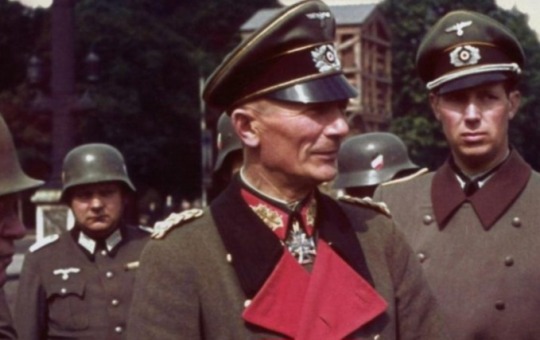

DAMN Fedor von Bock has some SHARP cheek bones 😳 Bro could cut paper with them
20 notes
·
View notes
Text


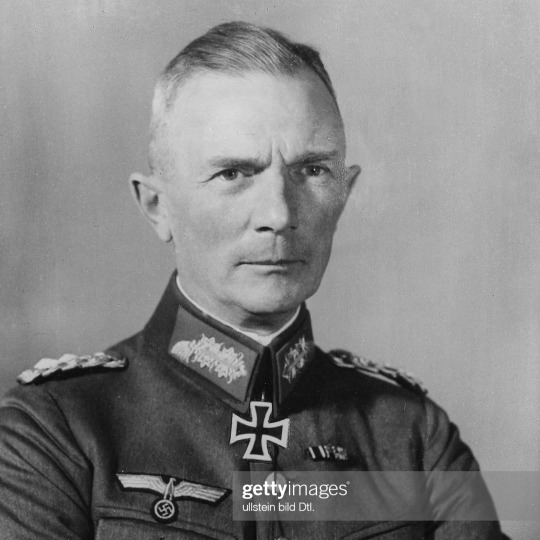

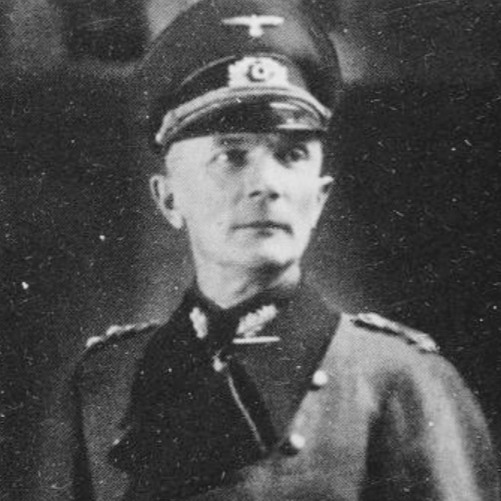



Happy Fedor's day for those who celebrate (me)!!!
bonus of him doing "the pose" :P

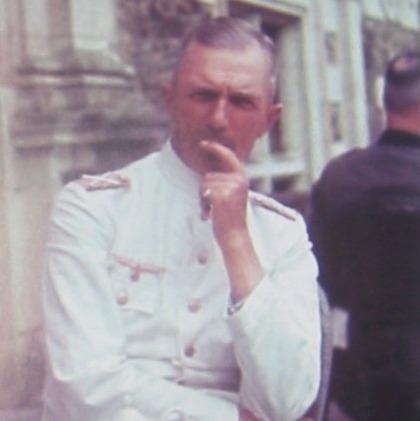
30 notes
·
View notes
Text
Studying historical figures to learn astrology.
When I look at a chart, the first thing I do is identifying which astrological body is the most influential, most powerful. I do not consider myself proficient in astrology, so there’s no elaborate theory behind it. I derived this method from my considerable experience of Tarot card reading—if you trust your cards absolutely wholeheartedly, you can predict the future. I get results that sometimes spook myself and my client.
Let me show you one such case—a client is worried about their final examination, they have only 4 days left to study. The subject is advanced math. They considered asking one of the class tutors to help them.
Issue one- Asking for help from this tutor? Result- Lover/10 of swords—not a good option. The tutor feels no urgency for himself and would stray from the class topic. The client learns nothing at all and is really bad at it.
Issue two- will the client pass this semester? Result- 3 of cups/ the Hierophant. The client IS GOING TO SAFELY PASS THIS CLASS, even though they studies advanced math very poorly. Here, The Hierophant could be identified as the most influential force.
I used Arabian Night Tarot for this client, the 3 of cups shows several women trying to talk an aristocrat into something on a banquet. The Hierophant is a Holy Man who left his body behind as a relic for his disciples.

I tell this client- a handful of people will totally fuck up this exam, as bad as you, you obviously know nothing about math; and this “handful of students” is a big enough number that will make the teacher worried. This group of students will most likely go and negotiate with the teacher for a solution. There will be a group discussion. I advise you pay attention to who fail the test as bad as you, and join this group.
In the end, the teacher will choose to grade the students on class participation, student’s moral value, respect of the teacher and class hard work instead of a number on a final exam—the teacher will try to seek out a kind of “higher moral value”. You will NOT fail this class. You will be safe. Client was still nervous about the exam and incredulous.
A week later, this client came back and tells me what happened- on the final exam date, OVER HALF OF THE STUDENTS simply gave up on math and not show up at all. The tutors and the teacher went into panic mode. They all went away and discuss what to do, and came back with “cancellation of the exam, the grades will be based on class homework and attendance”.
Such is the predictive power of identifying an influential card.
///
Now back to astrology. All in all, identifying the most crucial planet, then focus solely on it, becomes a way I try to learn reading a chart (disclaimer disclaimer, I’m not an astrologer). I attempt to test this method on charts of historic figures.


I’ve been thirsting over this pretty gentleman here for a while now— one disgruntled by Moscow weathers that he let anti-Hitler faction does activities among his staff, but hehehe I should stop now.
Fedor von Bock has a very prominent and identifiable Uranus in his chart, in tight conjunction with his ascendant. The tighter the conjunction, the more powerful it is. The conjunction is within one degree.
Let us remind ourselves the natures of Uranus—extremely sudden, intense, and high strung; as sharp as a stabbing knife; does not appreciate soft and tender aspects of life. Uranus is very unfavorable to forming stable relationships, but will have multiple exciting and bizarre love affairs. It signifies sudden destruction, accidents and defiance. Uranus will stab you, drive the blade in deep, and twist the handle. Dry and high just like some Aquarius are, Uranus is not easy to get along, let alone get close and dear to.
Since Uranus is extremely high strung, its natives have tense nerves and weak stomach- It is likely true that Fedor suffers from stomach ulcers. I suspect indigestion too, as if his body rejects food and drinks and would rather live on breathing air. Uranus affects him so deep that it is probable he chose to make these inconveniences part of his character. He has extremely poor ability to relax and rest.
The following is the account from Hitler's Generals by W.E. Hart.


Traditionally, it is SATURN who gives discipline, not Uranus. Saturn is structure; Uranus is anti-structure and highly individualistic. SATURN nourishes the body and a person's material realities, URANUS doesn't care. It is unlikely that Fedor values cultivating structure and disciplined routine in his soldiers, it is more likely that he's a fucking hammer, and he fucking drives everybody into the ground. It is a very important distinction to make.
His Uranus shines so much you'd have a hard time believing Fedi is Sagittarius, a joyful, benevolent Jupiter sign. I honestly do not believe this chart has a strong Saturn, either. I would contend that Fedi did not purposefully sent his soldiers to die like a sadistic, calculated monster. The truth is, URANUS cannot grasp the physical-materialistic-structural-reality aspects. Fedi could not comprehend soldiers are people, and people have bodies, bodies die and then bodies rot, the whole thing is messy. He sees it as a sudden burst of flames, then you are no more on this earth, and it is beautiful. One of the rare things that would move him to tears.
It is understandable that Fedi by nature could not handle logistics (hopefully his staff can). It is true that war experts attribute Germany's failure in WWII as a huge logistical problem. He is poor at providing food and shelter for his men. The bodily aspect doesn’t occur to him until the harsh Russian conditions hits him like a ton of bricks. He would be so affected by it, his own body would crumble.
///
So it's time to drive a point home- not all the time we learn a person by his stars, but we learn about a star from this person, and it is an incredible and valuable lesson. ASTROLOGY CANNOT REPLACE HONEST AND FACTUAL HISTORICAL STUDIES. Never could.
As mentioned, Fedi's Saturn is weak compared to Uranus. Saturn would return a person to their ancestry and tradition; it reminds you that you are part of a structure, a tiny spec in a cold Universe, a screw in the societal machinery. Its reminder can be ruthless and blunt, but its rewards reliable and long lasting. I do NOT believe Fedi sees himself as a part of the Nazi structure and would like to gain a kind of lasting rewards from it.
Here's an interesting thing- modern astrologers tell you that Uranus natives are innovative, cool, they like new stuff, new ideas, new technologies blah blah blah; but Fedi is a well-known and well documented Prussian aristocrat traditionalist. In my opinion, i is because astrologers forget that the generational outer planets are TIMELESS. if "time" is an idea inherently incongruent with Uranus, how do you define what is OLD and what is NEW, say? That is totally meaningless to Fedi-- Prussian ideal is just an intense timeless light for him to burst into flames to. The rest is not important.
Modern astrologers could get things so hilariously wrong, if they do not respect history, but want history to fit into their "modern and better" astrological interpretations to a point of harmful revisionism. Hopefully not many of them are like that.
All that aside, enjoy more fun facts about Fedi-
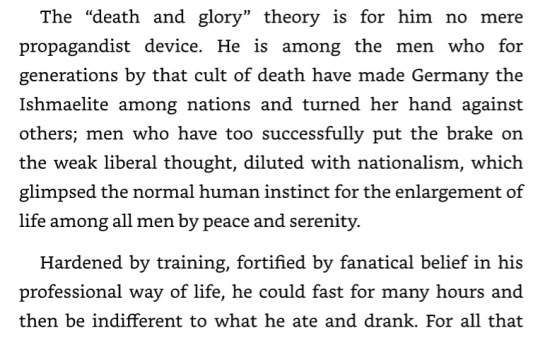

#fortune telling#tarot reading#tarotblr#tarotcommunity#tarot#tarot card story time#tarot cards#astrology#astro community#uranus#fedor von bock#horoscope#astro studies
16 notes
·
View notes
Note
what’s with all the nazi stuff?
I am fascinated with Wehrmacht and its Prussian military aristocracy, but I am uninterested in Nazism and disapprove it. One marshal who stands out in this respect is Fedor von Bock, who had been very close to Kaiser Wilhelm II his whole life, despite it pissed off Hitler. Ewald von Kleist treated people in the occupied Soviet zones with a lot of humanity. Later on in the war trial, Stalin pinned on him a crime called “alienation of the Soviet people from communist ideology” because he “treated the POWs too well”. Pretty hilarious if you think about it.
Many of the greatest innovative technics, including how to protect soldiers or conduct troops, came from humble background generals like Heinz Guderian and Erwin Rommel, who unfortunately fell victims for political struggles. I have mixed feelings for Doenitz for his technological genius and the cruelty of his strategies, but I believe Admiral Chester Nimitz of the United State navy defended him for solid reasons. Anyway, later on in the war Hitler distanced himself from the traditional military class (too many assassination attempts for this dictator’s taste), and used Walter Model heavily; it also resulted in his life being lost, in a way.
However, I do consider their blind devotion to the country, their out-dated sense of aristocratic aloofness and their inactivity during political turmoil and the SS bullshit as major moral weakness, some went as far as to consider Nazism "a chance to re-invent the crisis-ridden military class". Walter von Reichenau was an example. But this general died under suspicious circumstances. Hitler didn't like him too much, after all.
3 notes
·
View notes
Text

"RUSS INFANTRY AMBUSH SOLID WALL OF TANKS DESTROY 71 WITH FIRE," Toronto Star. May 20, 1942. Page 1.
----
Timoshenko's Army Reports Important New Gains in Kharkov
Battle - Germans Drive to South to Ease Soviet Pressure
----
SOVIET A.A. GUNNER KULIER AND 8TH VICTIM
---
Moscow, May 20 - Thousands of tanks and hundreds of thousands of men fought in an infernal cauldron of destruction before Kharkov today. The German high command was throwing new masses of machines and men into the battle in a vain attempt to stop the Russian advance. Tank fought tank and man fought man in such a tangle that planes, engaged in a war of their own over the smoke-clouded front, could not intervene.
The Moscow radio said Hitler had hurled every available tank in the battle which blazed into new fury at strategic points along the whole 1,800-mile Russian front. Field Marshal Fedor von Bock's German forces were reported "in flight" along the 100-mile front before Kharkov.
In one sector German tanks attacked in a solid wall against the Russian centre and flanks, Russian infantrymen, holding their fire, took the shock of the attack and, from a thousand foxholes, leaped out with hand grenades.
#world war ii#eastern front#semyon timoshenko#second battle of kharkov#counter-offensive#kharkiv#soviet union#red army#Вели́кая Оте́чественная война́#russian front#aa guns#anti aircraft gunners#axis vs allies
1 note
·
View note
Photo

On June 22, 1941, the German offensive was launched by three army groups under the same commanders as in the invasion of France in 1940. On the left (north), an army group under Gen. Wilhelm von Leeb struck from East Prussia into the Baltic states toward Leningrad (now St. Petersburg). On the right (south), another army group, under Gen. Gerd von Rundstedt, with an armoured group under Gen. Paul Ludwig von Kleist, advanced from southern Poland into Ukraine against Kiev, whence it was to wheel southeastward to the coasts of the Black Sea and the Sea of Azov. Last, in the centre, north of the Pripet Marshes, the main blow was delivered by Gen. Fedor von Bock’s army group, with one armoured group under Gen. Heinz Guderian and another under Gen. Hermann Hoth, thrusting northeastward at Smolensk and Moscow. https://www.instagram.com/p/CpDnKwYDW-U/?igshid=NGJjMDIxMWI=
0 notes
Text

• First Battle of Smolensk (1941)
The First Battle of Smolensk was a battle during the second phase of Operation Barbarossa, the Axis invasion of the Soviet Union, in World War II. It was fought around the city of Smolensk which began on July 10th, 1941 about 400 km (250 mi) west of Moscow.
On June 22nd, 1941, the Axis nations invaded the Soviet Union in Operation Barbarossa. At first, the campaign met with spectacular success, as the surprised Soviet troops were not able to offer coordinated resistance. After three weeks of fighting, the Germans had reached the Dvina and Dnieper rivers and planned for a resumption of the offensive. The main attack aimed at Moscow, was carried out by Army Group Centre (Fedor von Bock). Its next target on the way to the Soviet capital was the city of Smolensk. After their initial defeats, the Red Army began to recover and took measures to ensure a more determined resistance and new defensive line was established around Smolensk. Stalin placed Field Marshal Semyon Timoshenko in command and transferred five armies out of the strategic reserve to Timoshenko. These armies had to conduct counter-offensives to blunt the German drive. The German high command (OKW) was not aware of the Soviet build-up until they encountered them on the battlefield.
Prior to the German attack, the Soviets launched a counter-offensive; on July 6th, the 7th and 5th Mechanized Corps of the Soviet 20th Army attacked with about 1,500 tanks near Lepiel. The result was a disaster, as the offensive ran directly into the anti-tank defenses of the German 7th Panzer Division and the two Soviet mechanized corps were virtually wiped out. On July 10th, Guderian's 2nd Panzer Group began a surprise attack over the Dnieper, his forces overran the weak 13th Army and by 13 July, Guderian had passed Mogilev, trapping several Soviet divisions. His spearhead unit, the 29th Motorised Division, was already within 18 km (11 mi) of Smolensk.
The Soviets transferred additional troops from newly formed armies into the region around Smolensk, namely the 29th, 30th, 28th, and 24th Armies. These newly built formations would, immediately upon arrival, start a heavy counter-attack against the German forces around the Smolensk area from July 21st on. This put a heavy strain on the overextended Panzer forces, which had to cover a large area around the perimeter. However, poor coordination and logistics on the part of the Soviets allowed the Germans to successfully defend against these offensive efforts, while continuing to close the encirclement. Finally, on July 27th, the Germans were able to link up and close the pocket east of Smolensk, trapping large portions of 16th, 19th, and 20th Armies. Under the leadership of 20th Army, Soviet troops managed to break out of the pocket in a determined effort a few days later, assisted by the Soviet offensive efforts along the Smolensk front line. In the end, about 300,000 men were taken prisoner when the encirclement was re-established and the pocket eliminated. The Soviet attacks would last until July 30th, when the Germans finally repelled the last of them.
The Battle of Smolensk was another severe defeat for the Red Army in the opening phase of Operation Barbarossa. For the first time, the Soviets tried to implement a coordinated counter-attack against a large part of the front; although this counter-attack turned into a military disaster, the stiffening resistance showed that the Soviets were not yet defeated and that the Blitzkrieg towards Moscow was not going to be an easy undertaking. Dissent within the German high command and political leadership was exacerbated. The leaders of the General Staff, Franz Halder and Brauchitsch and commanders like Bock, Hoth and Guderian counselled against dispersing the German armoured units and to concentrate on Moscow. Hitler reiterated the lack of importance of Moscow and of strategic encirclements and ordered a concentration on economic targets such as Ukraine, the Donets Basin and the Caucasus, with more tactical encirclements to weaken the Soviets further. The German offensive effort became more fragmented, leading to the Battle of Kiev and the Battle of Uman. The battles were German victories but costly in time, men and equipment on their approach towards Moscow, allowing the Soviets time to prepare the defenses of the city.
#wwii#second world war#world war 2#world war ii#military history#history#soviet union#soviet history#german history#smolensk#1941
23 notes
·
View notes
Video
youtube
Heinrich Himmler, Hermann Göring, Erwin Rommel, Heinz Guderian, Gerd von Rundstedt, Walther von Brauchitsch, Reinhard Heydrich, Fedor von Bock, Hans Frank, and Erich von Manstein
2 notes
·
View notes
Text

Oop
15 notes
·
View notes
Text

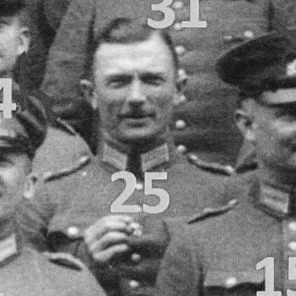
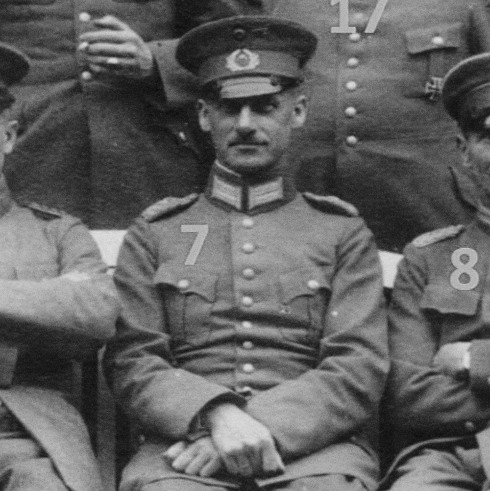
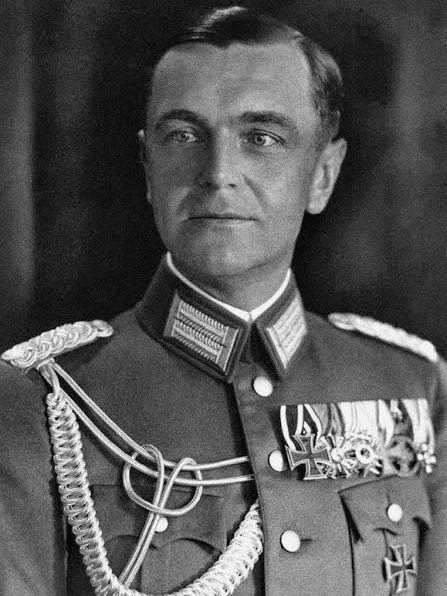
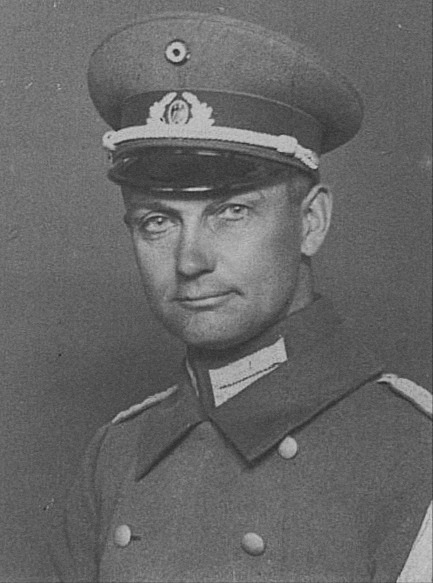


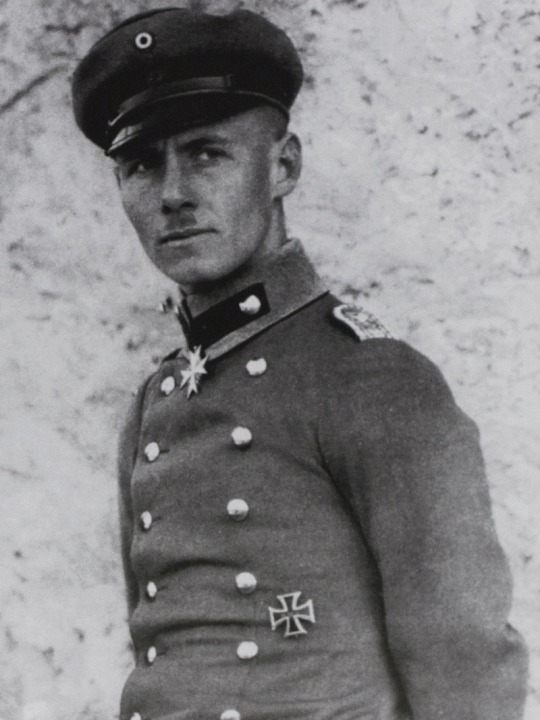
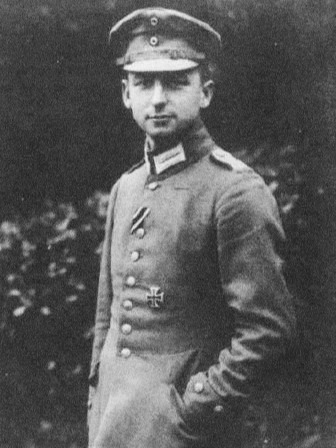
some young FM :)
#gerd von rundstedt#fedor von bock#wilhelm ritter von leeb#friedrich paulus#walter model#ewald von kleist#ferdinand schörner#erwin rommel#erich von manstein#generalfeldmarschall#heer#later on#ww1#3rd reich#photos credit to the owner#ok it's time to go to bed bye bye
18 notes
·
View notes
Photo

Navidad de 1941: Heinz Guderian defenestrado Para diciembre de 1941, Heinz Guderian se encontraba francamente conmovido por la feroz resistencia del Ejército Rojo y, cuando el severo invierno ruso fue acentuando, aurorizó una retirada limitada a un mejor terreno que le ayudara a capear en mejores condiciones el vendaval del contraataque soviético. Guderian en diciembre mismo realizó un viaje a Alemania, donde discutió con Adolf Hitler sobre las tácticas empleadas. Después de más desacuerdos con Fedor von Bock, comandante del Grupo de Ejércitos Centro y el general Gunther von Kluge, (legendarias sus desavenencias con von Kluge), el 25 de diciembre de 1941 Guderian fue destituido de su cargo. Con esta decisión de Adolf Hitler, Guderian se sumaba a la lista de las cabezas militares más notables de Barbarroja que vieron el despido o la licencia. Diciembre fue el mes de las movidas y quedaba patente que al líder alemán no le temblaba el pulso a la hora de tomar las decisiones más radicales. https://www.instagram.com/p/B6hcgJbAlRM/?igshid=17p3lu6hlx8gk
0 notes
Photo

Operation Barbarossa: Field Marshall Fedor von Bock, commanding the German Army Group Center, goes to a staff briefing in Nikolskoya, Russia, to plan further advances on Moscow. October, 1941. #war #history #vintage #retro #guns #gun #ww2 #40s #tank #tanks #1940s #military #battle #combat #campaign #battles #wwii #worldwartwo
#worldwartwo#battle#history#guns#ww2#1940s#combat#retro#tanks#gun#40s#vintage#tank#military#wwii#war#campaign#battles
14 notes
·
View notes
Text
NOMINATION
Janvier 1936
---------------------------------------------
1e Armée : Général Erwin Von Witzleben
2e Armée : Général Wilhelm Ritter von Leeb
3e Armée : Général Friedrich Schulz
4e Armée : Général Fedor von Bock
1e Groupe d’armés : Maréchal Gerd von Rundstedt
---------------------------------------------
Ministère de la Guerre
0 notes
Text
The 5 worst modern battles to fight as a foot soldier
Thomson Reuters
Let’s be clear — all battles suck for a foot soldier, even the smaller ones. But there were some in recent times that sucked more than others for the lowly grunt, with body counts piling up, bad commanders and leadership with a total lack of respect for the lives of their men.
Here is a partial list of five of the worst modern battles to be a bottom-of-the-barrel foot soldier.
5. The Battle of Kiev, 1941
(AP Photo)
The Battle of Kiev lasted from August 23 — Sept. 26, 1941. The German army, led by Fedor von Bock, Gerd von Rundstedt, and the famed Heinz Guderian, continued their spearhead towards Moscow but Hitler reconsidered.
Instead, he ordered Bock, von Rundstedt, and Guderian to focus their attack on the city of Kiev. The total amount of German forces heading towards Kiev numbered a little over 500,000. The reason for this was that Kiev was third largest city with a large concentration of Soviet forces with likely more than 627,000 Red Army troops facing the German onslaught.
How bad was it? In order to crush the Soviets in Kiev, the Germans were forced to systematically reduce the pockets of resistance. In other words, the Germans had to work at making each line (pockets of resistance) buckle and break.
Because of this, the fighting was unsurprisingly up close and personal. The total number of dead were 127,000 Germans and 700,544 Soviets — that’s over 800,000 killed in the battle for Kiev.
4. The Battle of Verdun, 1916
General Photographic Agency/Getty Images
The Battle of Verdun lasted from Feb. 21 — Dec. 18, 1916, between the armies of France and the German Empire. Located in northeastern France, when the battle of Verdun kicked off, 30,000 French soldiers faced 130,000 German soldiers. Seeing that 30,000 troops were not enough, the French bolstered their forces to a staggering 1.1 million men. The Germans countered this by delivering 1.25 million troops.
The horrors of such a battle need little explanation. All one has to do is look at the photos of the battle site. World War I was a war in which the technology outpaced the tactics and strategies. Because of this, war came to a near standstill as men were mowed down by machine guns and blown to pieces by artillery fire on a daily basis.
If that wasn’t enough, living in the trenches was another misery all its own. Here’s a testimony.
A German soldier writes to his parents:
An awful word, Verdun. Numerous people, still young and filled with hope, had to lay down their lives here – their mortal remains decomposing somewhere, in between trenches, in mass graves, at cemeteries …
In total, the French would lose upwards of 500,000 troops while the Germans lost in some estimates more than 400,000 — nearly 1 million killed on both sides.
3. The Siege of Leningrad, 1941-1944
(AP Photo, File)
The siege of Leningrad lasted from Sept. 8 1941 — Jan. 27, 1944. The German army surrounded the city with 725,000 troops and began an on-and-off bombardment and assault of the city which was defended by 930,000 Soviet soldiers.
While the Germans made little advancement into the city, mainly controlling the outskirts, they were effective in starving the city to near death.
While war is indeed hell, the Germans suffered from the typical day-to-day engagements as did the Soviet soldiers. However, the people of the city suffered the worst. Due to the limited amount of supplies, many people ate whatever they could get their hands on, even people.
Once the siege lifted, the Germans suffered 579,985 casualties while the Soviets lost 642,000 during the siege and another 400,000 at evacuations.
See the rest of the story at Business Insider
from Feedburner http://ift.tt/2iAfApw
1 note
·
View note
Photo

New Audiobook has been published on http://www.audiobook.pw/audiobook/the-greatest-battles-in-history-the-battle-of-moscow-during-world-war-ii/
The Greatest Battles in History: The Battle of Moscow During World War II
World War II was fought on a scale unlike anything before or since in human history, and the unfathomable casualty counts are attributable in large measure to the carnage inflicted between Nazi Germany and the Soviet Union during Hitler’s invasion of Russia and Stalin’s desperate defense. The invasion came in 1941 following a nonaggression pact signed between the two in 1939, which allowed Hitler to focus his attention on the west without having to worry about an attack from the eastern front. While Germany was focusing on the west, the Soviet Union sent large contingents of troops to the border region between the two countries, and Stalin’s plan to take territory in Poland and the Baltic States angered Hitler. By 1940, Hitler viewed Stalin as a major threat and had made the decision to invade Russia: In the course of this contest, Russia must be disposed of…The quicker we smash Russia the better.
While a legend exists today that Hitler’s strategic fecklessness destroyed Germany’s chances, despite the wise objections of the Wehrmacht general staff (OKW), the actual situation in 1941 resembled the precise reverse of this familiar historical trope. The historian Robert Forczyk argues convincingly that the Fuhrer retained his full strategic acumen in 1941, until he ill-advisedly adopted the suggestions of the OKW and diverted forces in a winter campaign to seize the Soviet capital, leading to the Battle of Moscow.
The Third Reich’s dictator initially viewed Moscow as a relatively trivial objective, only to be seized once the Red Army suffered defeat in detail. In fact, he planned a pause during the bitter Russian winter, conserving German strength for a fresh offensive in spring of 1942. Wisely, According to Chief of Operations Colonel Heusinger, Hitler manifested an instinctive aversion to treading the same path as Napoleon…Moscow gives him a sinister feeling.
Despite the obstructionism of the OKW General Staff – centered around Fedor von Bock, Franz Halder and Brauschitsch, who obsessed over taking Moscow and reacted to the Fuhrer’s focus on the south with open rage and contempt – the southern offensive went ahead, securing another stunning victory over the Soviets and seizing the economically vital Donets Basin. In the meantime, Stalin immolated hundreds of thousands of his own soldiers in futile attacks against Army Group Center, holding the German front facing Moscow.
Halder ultimately drafted the plan for Operation Typhoon, the October 1941 thrust towards Moscow, and Hitler showed considerable reluctance to agree to the attack, believing it best if the Germans suspended operations until spring. Halder and his OKW clique persisted, however, badgering the Fuhrer until Hitler imprudently yielded to their demands. The head of the Third Reich apparently succumbed to Halder’s and Bock’s importuning mostly due to unrestrained ebullience over the southern success. He felt that at this stage, nothing could go wrong. In doing so, he forgot the keenly insightful precept of the 17th century samurai general Oda Nobunaga, who declared, After a victory, tighten your helmet straps. Far from maintaining his focus, however, Hitler relaxed and let his guard down. His surrender to Halder’s impractical plan signaled the beginning of an ominous reversal of Wehrmacht fortunes whose seeds sprouted at the Battle of Moscow.
0 notes